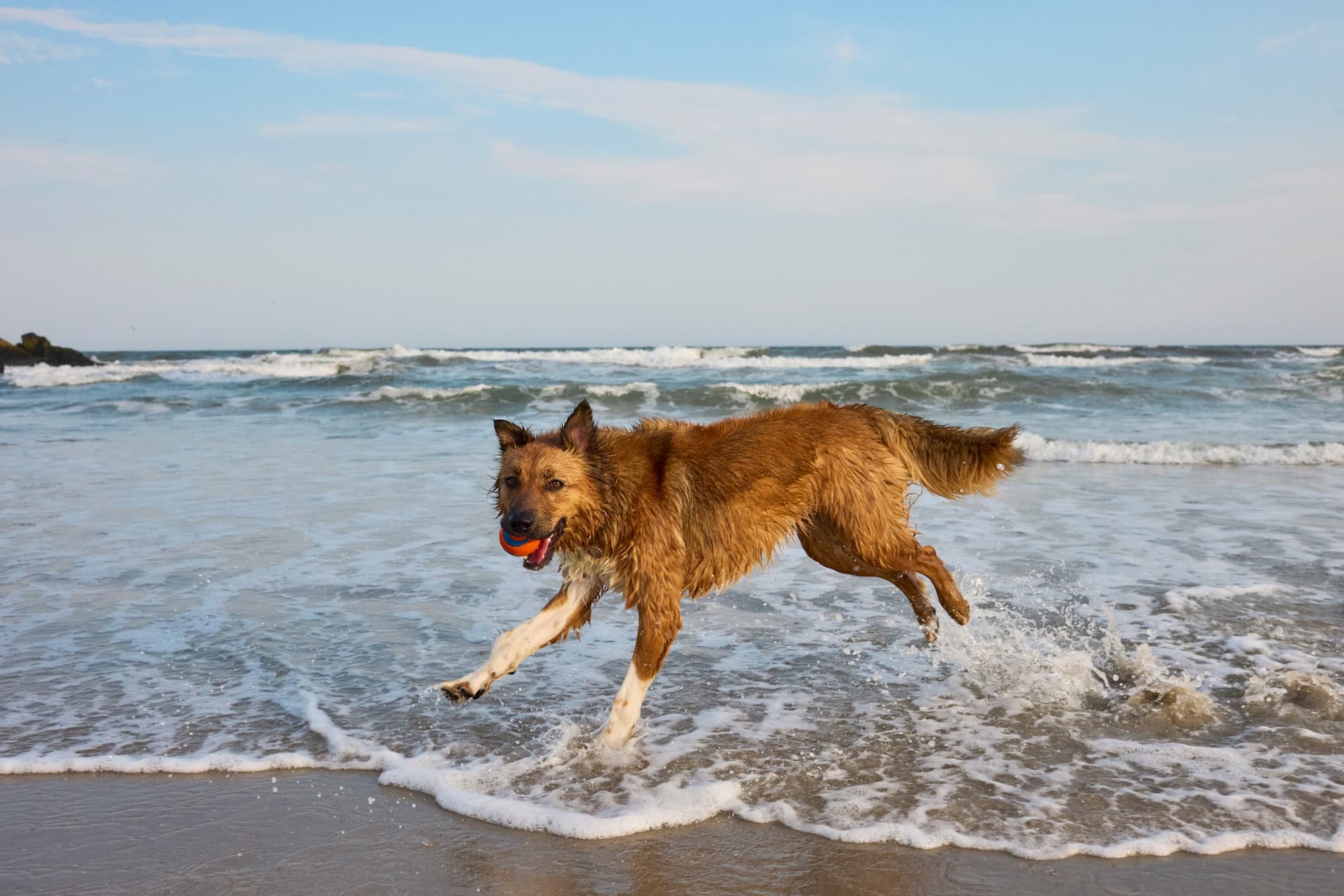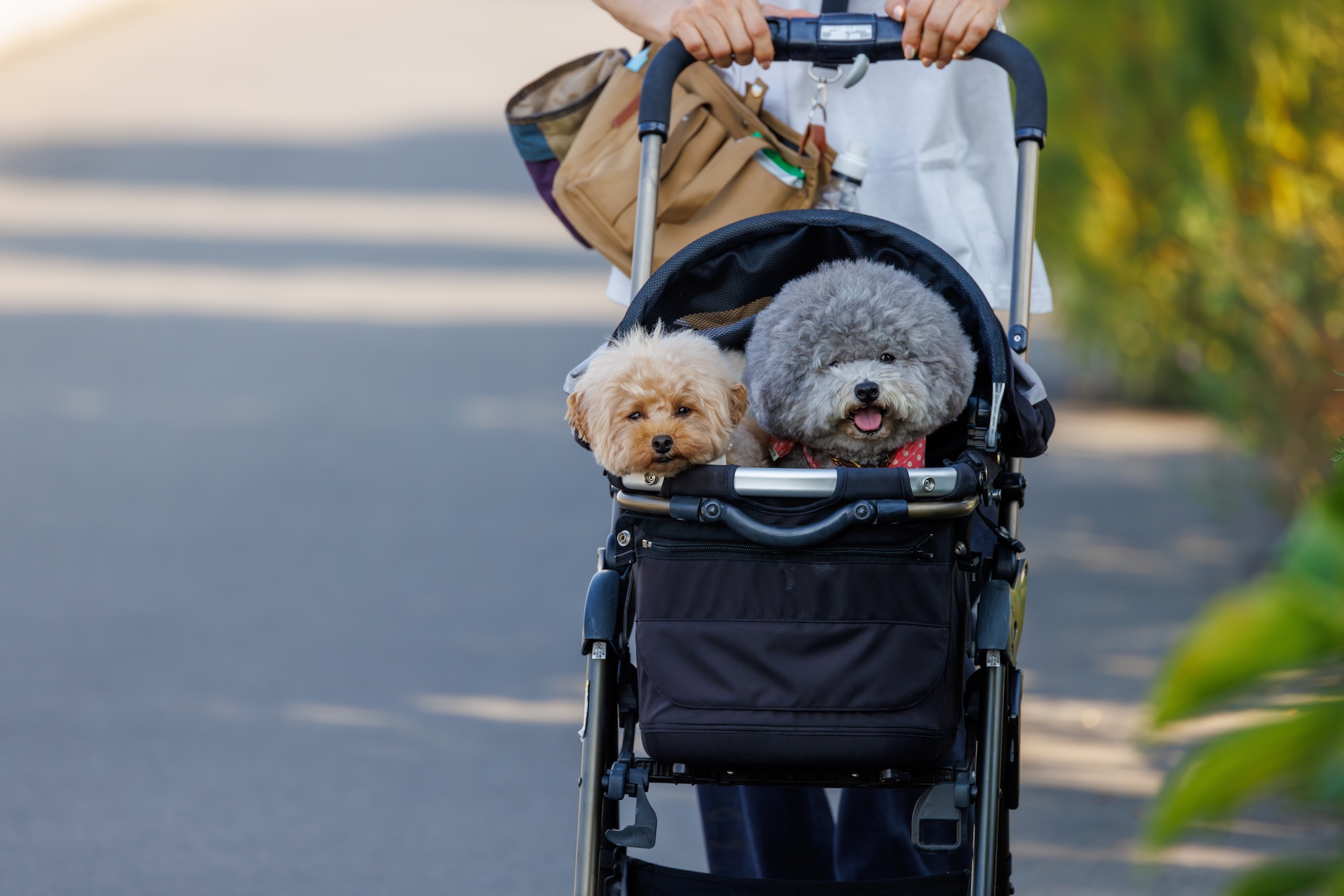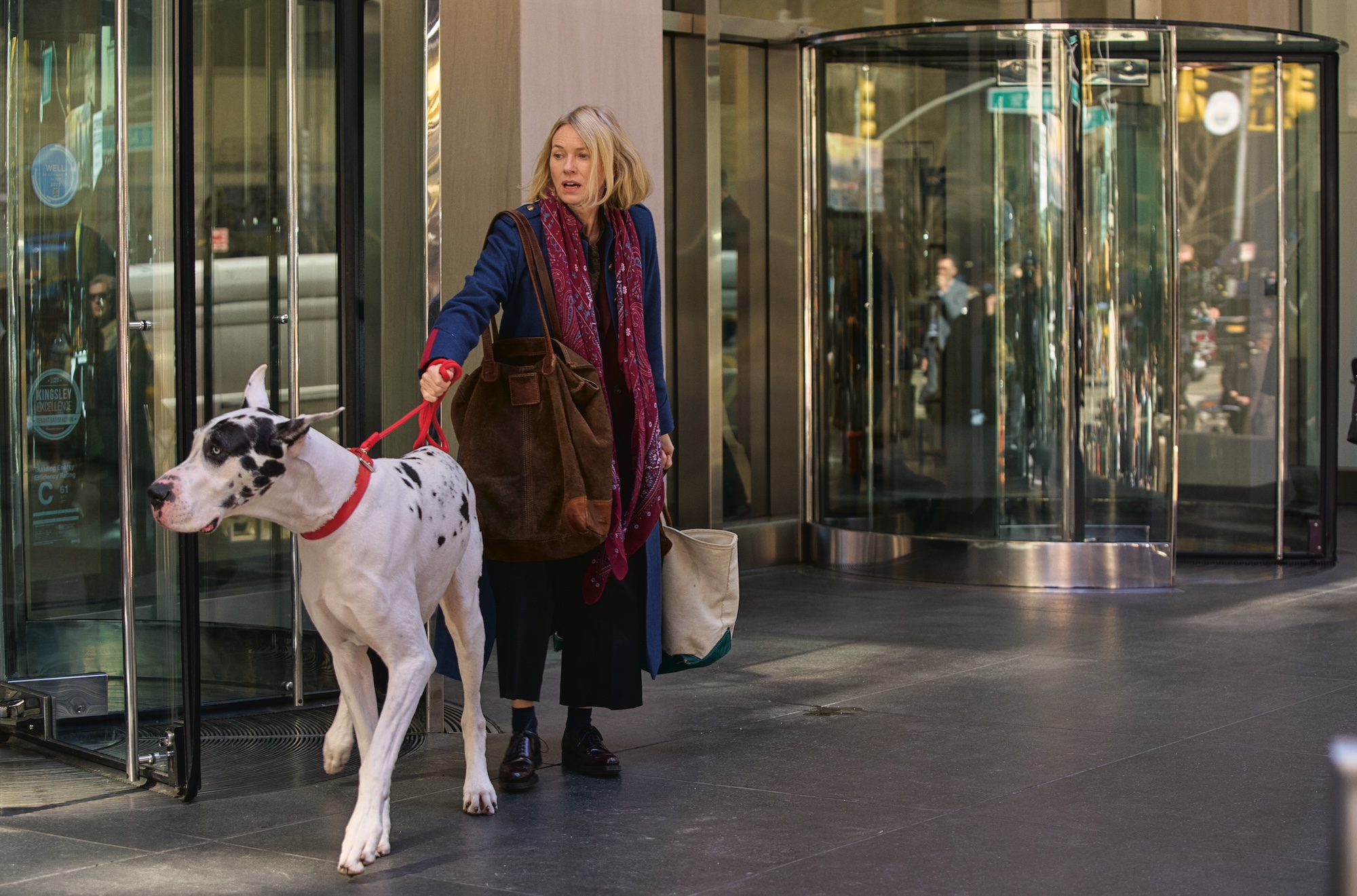Having an eager companion to join you on your adventures is one of the best parts of dog ownership. And come the warmer months, you may be tempted to venture a little further afield than your usual walk route or local park, and embark on a great American road trip.
Long trips may not be right for every dog, but with a bit of practice and preparation, your dog can be the best travel companion you’ll ever know—whether you’re heading in search of wilderness, or just to visit family across the state line.
Start small
The first step is to determine whether your dog is car-compatible. And the only way to do that is to try a quick trip! Going for a half-hour car ride should give you a sense of how your wing-dog is handling being a passenger. If possible, avoid twisty roads in favor of straighter routes to ease them in, and have a second person in the car to keep a close eye on your four-legged passenger while the driver focuses on the road.
Set your pup up for success by giving them plenty of exercise and an opportunity to use the bathroom before setting off. Make sure they haven’t had much food or water in the few hours beforehand, and if this is their first time in the car, a crate in the vehicle—in the rear of an SUV or back seat of a car— might be most comfortable for them (and you).
Always secure your dog in a crate or another enclosure designed to keep dogs safe in cars, or using a harness intended for that purpose. It’s also a good idea to put down towels or blankets, which not only can make slippery car surfaces easier for dogs to navigate, but will also make cleaning up shedding or… other messes… simpler. Either way, pack some cleaning supplies in preparation for the unfortunate event of car sickness, and hope for the best!
Once you’ve gotten a short journey down, begin building up to the big trip slowly, rather than jumping straight into it. Use fun but small runs, like to the park or to the vets to get your dog used to the experience and the idea that there can be exciting stuff awaiting them at the end of a car ride. Smaller trips will also help reveal any car-related issues they may have in a safe, familiar environment, rather than at the side of the road in the middle of nowhere.
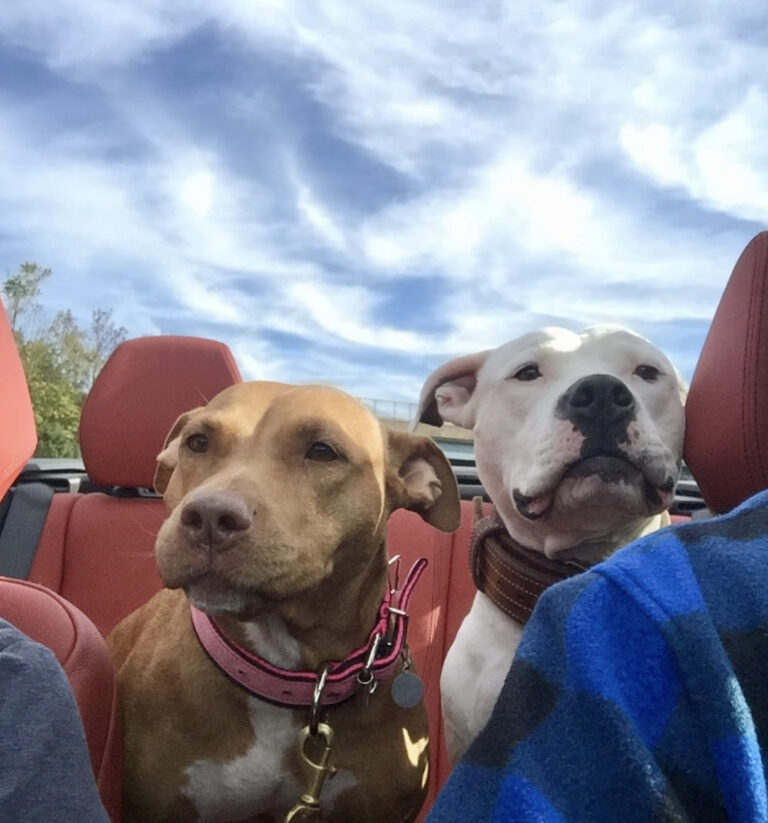
Practice makes perfect
Even if your maiden voyage doesn’t go as smoothly as you’d like, there’s no reason to give up hope after one bad ride. Veteran road trippers report that even dogs who initially detested car rides (see: anxiety, crying, vomiting) gained a taste, or at least a tolerance, for them with a bit of practice and familiarization. If you choose to persevere, the first thing to do is to ensure they’re as comfortable as possible, whether that involves extra blankets that smell like home, special pet seats, or some extra human assurance and car treats.
If not in a crate, your dog should be secured in the car by a leash or a car harness, but some smaller breeds can find it more comfortable and secure to sit in a car seat designed specifically for pets. These soft enclosures help keep them safe and gives them a cozy bed to nestle down in while you’re on the go. This kind of gear can have a dramatic effect on dogs’ enjoyment of car rides, so it’s well worth a test drive! For larger dogs, a similar effect can be achieved with a back seat hammock, also used in conjunction with a leash or harness.
Another trick to help get your pup used to drives is to save some special treats as car-ride-specific rewards. Saving the really good stuff, like a puzzle toy filled with dog-appropriate peanut butter, or cheese, or other especially beloved fresh snacks is sure to make them more predisposed to the open road.
It’s best to serve full meals a few hours before setting off, as food on the stomach can make nausea more likely for dogs prone to it. However, feeding your dog in the (parked) car can be a way to build a positive association with the car, and that there are things to look forward to about going in it! Just keep the meals short if you have more driving ahead of you—heaping servings of praise and encouragement for just being in the car are always effective and appreciated.
Another thing to consider refreshing is your dog’s potty training—it’s one thing for them not to pee in the car, but if your journey is going to be taking you anywhere unfamiliar, making sure that they can do it on command and while on-leash (and potentially with distractions like roads nearby) is a useful skill that will make strange surroundings less stressful and more manageable. And stops less frequent.
The dog-accompanied road trip packing list
Assuming that your dog is displaying signs that are encouraging enough for you to consider tackling a longer trip, there are some more pieces of kit worth considering investing in to make the journeys easier. Specific travel crates for hatches and back seats, harnesses, fabric bucket seats, ramps, and seat covers can all be good options for different kinds of cars and canine passengers.
Here’s a full list of items we recommend you bring with you:
- Food
- Treats
- Collapsible travel bowls
- Bottled water
- Collar or harness
- Leash
- Poop bags
- Toys
- Puzzle toys for the car
- Bedding for the car
- Car harness, crate, or wire gate
- Window sunshade
- Dog first-aid kit
- Current veterinary records
A few crucial things to have on you at all times: your dog’s ID—you wouldn’t leave for a trip without your driver’s license! Paper documentation, a photo of your pup, as well as dog tags or a microchip are always a good idea if your dog will be leaving your side at any point during your trip. You should also include detailed notes about any medical or health issues, and ensure they’re up to date on all their vaccinations.
The other is food! When traveling with fresh food, leave it in the freezer until the last possible moment, then pack it in an insulated cooler tote with additional ice packs. The tighter you pack it, the colder it’ll stay. Be sure to feel the food before serving it. If it’s still cold to the touch, you should be good to go. If not, skip it—The Farmer’s Dog is real food with no preservatives, and shouldn’t be kept too long at room temperature. If it’s been out for two hours—or one hour at 90°F or above—throw it away.
Make your plan
Even if your dog is the most eager adventurer of all your passengers, you’ll still want to make sure that your destination will be suitable for them. If you’ll be staying with family or friends, it can be polite to check in with them each time you’re visiting if it’s ok to bring your pup, as situations can change between visits.
Hotels and other accommodations are a little less easily persuaded though, so do your research ahead of time.
Sites like BringFido.com are great resources to see which hotels welcome dogs, and there are some pretty spectacular ones out there. And even if they are pet-friendly, hotels can have specific policies around leaving your dog unattended that you should investigate. Same with campsites—ask ahead of time, but an increasing number are friendly to four-legged travelers. However, given the typical restrictions for dogs at campgrounds (leashes of six feet or less are often mandatory) and the potential for overcrowding in the most popular months, a preferable (and cheaper!) option can be dispersed camping, eschewing traditional organized campgrounds for undeveloped campsites on public lands, and a larger space for your dog to roam. Follow local guidelines to avoid breaking any laws, and for a primer on how to approach a truly off-the-grid escape like this, we find Bearfoot Theory’s breakdown helpful.
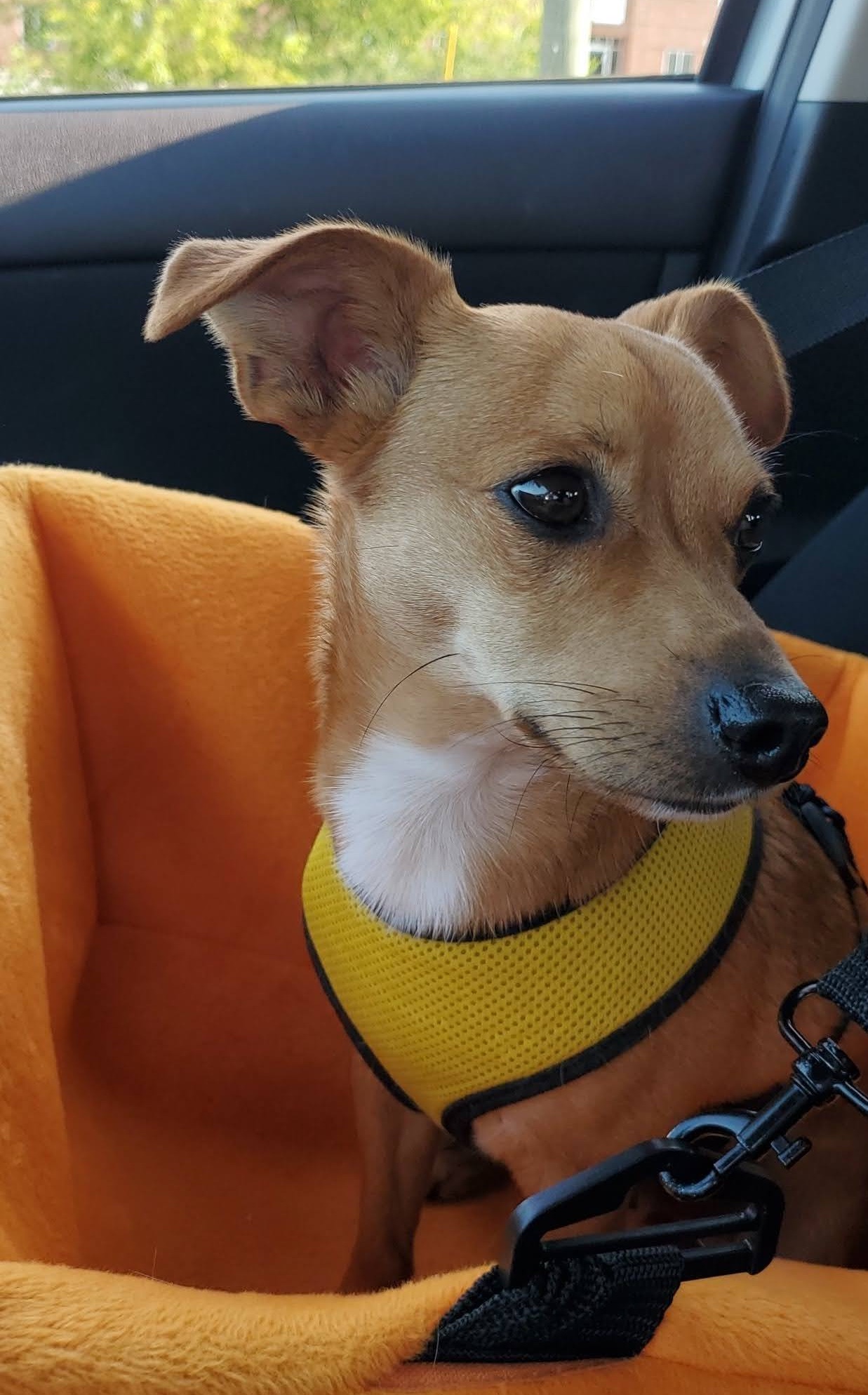
Make your trip dog-friendly
Ideally, if you’re bringing your dog on a journey with you, it’s to do things they can participate in too, rather than leaving them behind while you go off on a culinary crawl of a city, or hike in spots they’re not permitted. Some of the top-rated routes to travel with canine companions include Cannon Beach to Portland, in Oregon; Beartooth Highway in Wyoming and Montana; Dixie National Forest, in Utah; New Orleans, Louisiana to Austin, Texas along the beachy Gulf Coast; and Atlanta to Savannah, in Georgia. And for more inspiration, dog travel blog Go Pet Friendly has ideas for every corner of the country.
If your itinerary itself isn’t dog-friendly (or friendly to your specific dog, i.e. intense canyon hikes for a dog with arthritis) they’ll likely have a better time staying home with a sitter, or at a kennel where they’ll be well-cared for. On that note, check the policies of each of the places you plan on going in addition to your accommodation, and research their regulations on dog-friendliness and if leashes are required. Similarly, it never hurts to locate a local veterinarian, in case of an accident.
And just because the location is dog-friendly, doesn’t necessarily mean it’s ideal for your dog. For instance, if it’s a busy area with lots of other dogs, it may not be right for a dog with aggression issues; a hiking trip probably isn’t right for a dog with joint issues; and a summertime canyon tour of the southwest wouldn’t be a good idea for thick-coated breeds who’d have a hard time with the temperature. As always, make sure you’re considering your dog, as travel is not a one-size-fits-all endeavor.
Once you have your plans in place though and your dog ready to roll, you’re all good to go! But whatever you do: Never, ever leave your dog in a hot car.
A few words on RV-ing
Spending months on the road at a time with a dog can be a daunting prospect, but they in no way have to hold you back. RVs offer much more space and comfort than a car for long journeys, and the familiarity of the environment can make for an easier transition to being a road dog than a new hotel every night—but there are a few points uniquely applicable to a mobile home setup to consider.
Firstly, though they have larger space in which to roam inside, pets should be secured whenever the vehicle is in motion so they’re safe in the event of a hard stop, and aren’t able to distract you while you’re doing the driving. A pet gate or some way of blocking their access to the door of the RV can help prevent any untimely bids for freedom as you’re coming and going from the main cabin—and a pet ramp can help them navigate the steps up and down.
Make sure they’re still getting ample exercise—even if you’re comfortable doing long stints behind the wheel when you’ve got a lot of ground you want to cover, but they’ll need some physical and mental stimulation outside the van when you do come to a stop. And don’t forget a bathroom break every now and again. Daily drives are not a replacement for daily walks, no matter how much more ground you cover!
And lastly, give them their own area of the cabin. Space is at a premium on any road trip, but just like at home, your pet should have their own area they can relax and feel comfortable in when they (or you) need a little space.
Keep all arms, legs, heads, tongues, paws, and tails inside the ride
And one word of warning: There’s perhaps no more joyful a sight on the open road than driving next to a car with a dog sticking its head out the window. Let’s be honest—it’s an iconic image and a heartwarming one. But a very risky one.
With the window open to the width that a dog can stick its neck out, the dog could jump out, which could be deadly if you’re driving at speed. And even if your dog has a good sense of its own mortality (or is restrained with a harness) with winds whipping into its face, something could easily blow into their face and damage their head, mouth, or eyes. It’s a risky behavior to permit for something that will only distract you as you drive. We recommend keeping their heads and legs inside the ride at all times.
And enjoy yourselves!
Dogs are fantastic companions, and awesome adventure buddies, so taking them with you for trips is highly encouraged, if your activities are conducive to their participation. And with the right preparation and planning, you can make their company a cherished part of your travels. You’ll just have to handle the music playlist yourself.
This article was originally published in July of 2020 and was updated in February of 2024.
